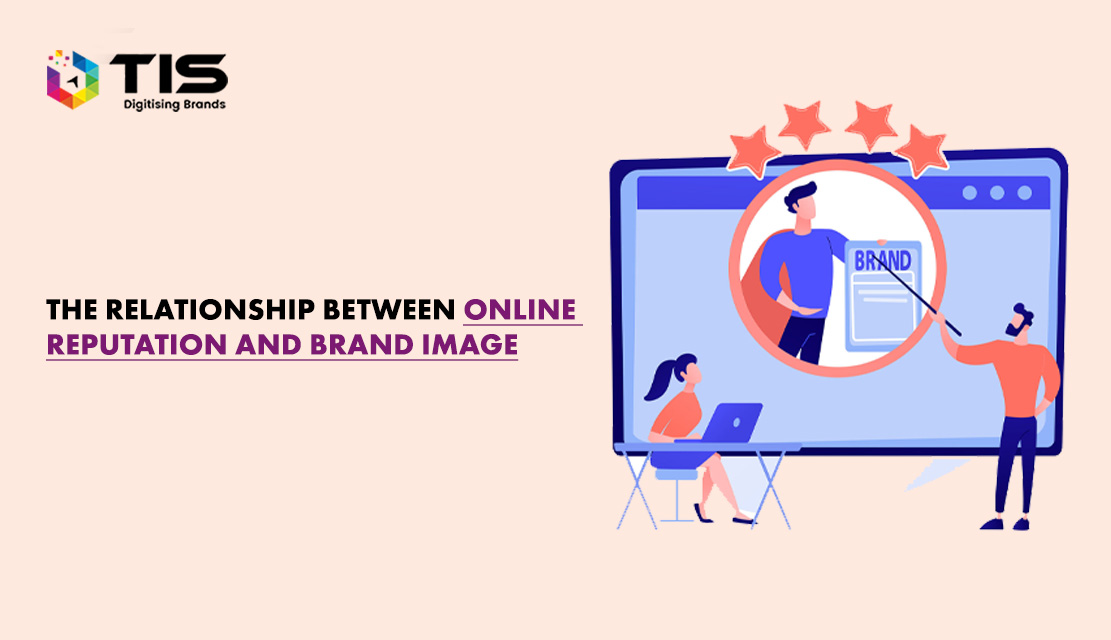





 May 30, 2023
May 30, 2023

– In the digital age, where consumers heavily rely on the internet, the relationship between online reputation and brand image is crucial for businesses.
– The way consumers perceive a brand online and the impressions they form significantly impact their purchase decisions.
– The success of a brand in the online marketplace is closely tied to its online reputation and brand image.
Impact on consumer perceptions and purchase decisions:
– Online reputation and brand image shape consumer perceptions of a brand’s trustworthiness, credibility, and quality.
– Positive online reputation and a strong brand image can influence consumers to choose a particular brand over its competitors.
– Negative online reputation or a poor brand image can deter potential customers and lead to lost opportunities.
A positive online reputation and a strong brand image play a crucial role in shaping a brand’s success in the online marketplace. Firstly, a positive online reputation and a well-crafted brand image contribute to increased brand awareness, as satisfied customers share their positive experiences, recommend the brand to others, and leave favorable reviews. This heightened brand awareness leads to greater visibility and a larger customer base. Additionally, a positive online reputation and a strong brand image foster customer trust and loyalty. When consumers perceive a brand as reliable, trustworthy, and aligned with their values, they are more likely to choose that brand over competitors. Moreover, brands with a favorable online reputation and a well-crafted brand image often enjoy a competitive advantage. They can differentiate themselves from competitors and stand out in a crowded marketplace. Finally, the relationship between online reputation and brand image is pivotal for long-term success and sustainability in the digital marketplace. By consistently managing and aligning these two aspects, brands can build a positive reputation, maintain customer trust, and establish a strong brand presence, which ultimately leads to enduring success in the online landscape.
Definition and sources of online reputation: Online reputation is the overall impression and evaluation of a brand that is shaped by the collective perception of consumers through various online sources and interactions. It represents how a brand is viewed, trusted, and perceived in the digital landscape. Online reputation is formed through a multitude of sources, including customer reviews and ratings on platforms like Yelp, Amazon, or Google Reviews, where customers openly express their experiences and opinions. Social media platforms such as Twitter, Facebook, and Instagram play a significant role in shaping online reputation through discussions, comments, and engagements related to the brand. Additionally, online forums and blogs provide platforms for individuals to share their experiences, recommendations, and critiques, further contributing to the formation of a brand’s online reputation. It is the culmination of these diverse digital channels that creates the overall perception and evaluation of a brand’s reputation in the online sphere.
Customer reviews and ratings are a crucial aspect of online reputation management, offering invaluable insights into the experiences, satisfaction levels, and opinions of customers. Positive reviews and high ratings play a pivotal role in shaping a brand’s online reputation by highlighting the strengths, quality, and positive attributes of products or services. They build trust and credibility among potential customers, serving as social proof of a brand’s reliability and desirability. Conversely, negative reviews have the potential to harm a brand’s reputation, as they can raise concerns, highlight shortcomings, or express dissatisfaction. Addressing negative reviews promptly and effectively is essential for mitigating reputational damage and demonstrating a commitment to customer satisfaction. Monitoring and actively managing customer reviews and ratings allow businesses to gauge their brand’s performance, identify areas for improvement, and maintain a positive online reputation.
Social media platforms have revolutionized the way consumers interact with brands, providing a space for discussions, opinion-sharing, and engagement. These platforms offer a direct channel for consumers to express their thoughts, experiences, and feedback about a brand, its products, or services. Social media conversations hold significant power in shaping a brand’s online reputation due to their potential to reach a vast audience and quickly spread through shares, retweets, or comments. The viral nature of social media means that a single conversation or post can have a ripple effect, influencing the perception of a brand among a wide range of consumers. Therefore, actively participating in and monitoring social media discussions is crucial for businesses to not only gauge the sentiment and feedback but also proactively address concerns and build a positive online reputation.
Online forums and blogs play a crucial role in shaping a brand’s online reputation by providing platforms for consumers to engage in detailed discussions about products, services, and their experiences with brands. These platforms enable users to actively seek and share information, recommendations, and critiques, which can significantly influence the perception of a brand. Consumers often turn to online forums and blogs to seek advice, share their personal experiences, and express their opinions about brands. Positive reviews and recommendations from influential forum members or bloggers can enhance a brand’s online reputation, while negative discussions or critiques can potentially damage it. Therefore, monitoring and actively participating in these forums and blogs are essential for brands to understand consumer sentiment, address concerns, and manage their online reputation effectively.
Brand image encompasses the collective beliefs, associations, and impressions that consumers form about a brand. It goes beyond the tangible attributes of a product or service and delves into the intangible qualities that shape consumer perceptions. These intangible qualities include the values and principles that a brand embodies, the personality traits it exhibits, and the positioning it strives to establish in the minds of its target audience. Brand image is the emotional and cognitive perception that consumers develop based on their interactions with the brand and the messages it communicates. It is the sum total of how consumers perceive a brand’s identity, reputation, trustworthiness, and relevance in relation to their needs and desires. By effectively managing and shaping brand image, businesses can establish a distinct and favorable position in the marketplace, differentiating themselves from competitors and creating a strong connection with their target audience.
Tangible qualities refer to the visible and physical aspects of a brand that can be easily identified and recognized by consumers. These elements include:
Brand image development encompasses a variety of touchpoints that collectively shape consumer perceptions and contribute to building the desired brand image. These touchpoints include advertising campaigns that communicate the brand’s message and values, marketing messages that convey the brand’s unique selling points, visual identity elements such as logos, colors, and design aesthetics that create a distinct brand personality, and customer interactions that occur at various stages of the customer journey. Each touchpoint plays a significant role in influencing consumer attitudes and beliefs about the brand, reinforcing specific associations and emotions. By strategically managing these touchpoints, businesses can create a cohesive and consistent brand image that resonates with their target audience and aligns with their brand positioning and values.
The importance of emotional and cognitive consumer perceptions in shaping brand image cannot be understated. Brand image is not solely based on rational or logical factors; it also relies heavily on the emotional and cognitive associations that consumers develop towards a brand. Emotional perceptions are driven by the feelings, experiences, and connections that individuals have with a brand. These emotional associations create a sense of loyalty, attachment, and even love for the brand, leading to long-term customer relationships and advocacy. On the other hand, cognitive perceptions involve the cognitive processes such as beliefs, thoughts, and judgments that consumers form about a brand based on their experiences, knowledge, and information. Both emotional and cognitive perceptions work together to influence consumer behavior, decision-making, and brand preferences. By understanding and effectively managing these emotional and cognitive perceptions, businesses can shape a positive brand image that resonates with their target audience and fosters strong customer loyalty and advocacy.
In conclusion, the relationship between online reputation and brand image is intricate and reciprocal. A positive online reputation contributes to a favorable brand image, while a strong brand image can enhance and protect a brand’s online reputation. The significance of this relationship lies in its influence on consumer perceptions and purchase decisions. Online reputation and brand image shape how consumers perceive a brand’s trustworthiness, credibility, and quality, ultimately influencing their decision to choose one brand over another. A positive online reputation and a well-crafted brand image also play a crucial role in a brand’s success in the online marketplace. They contribute to increased brand awareness, customer trust and loyalty, and provide a competitive advantage. Additionally, actively managing and aligning online reputation and brand image allow businesses to build enduring success in the digital landscape by fostering positive customer relationships and differentiating themselves from competitors. By understanding the interplay between online reputation and brand image, businesses can strategically manage their online presence, cultivate a positive perception among consumers, and establish a strong brand presence in the digital marketplace.

Introduction: The topic explores the immense potential of video marketing and its impact on search engine optimization (SEO) and audience engagement. It emphasizes the importance of optimizing videos to enhance their visibility in search engine results and attract more viewers. By incorporating effective SEO strategies specifically tailored for videos,...
Read More

As businesses and individuals become increasingly aware of the importance of managing and protecting their online reputation, the digital landscape is becoming increasingly digital. A professional online reputation management service can bring numerous benefits and help maintain a positive online presence. You can get these benefits by hiring a...
Read More

In today’s digital age, where information spreads rapidly and is readily accessible, your online reputation can significantly impact various aspects of your life, both personally and professionally. Ignoring your online reputation can pose several risks that may have far-reaching consequences. Here are some of the key risks associated with...
Read More